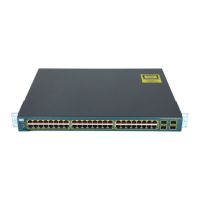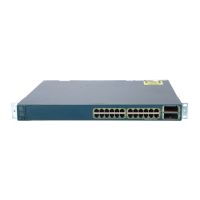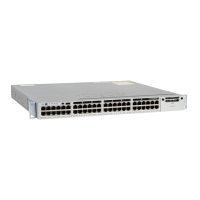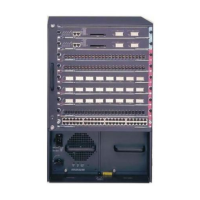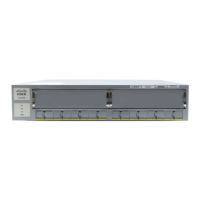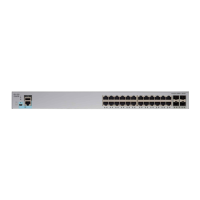1-3
Catalyst 3750 Switch Software Configuration Guide
78-16180-02
Chapter 1 Overview
Features
• Cisco StackWise technology for
–
Connecting up to nine switches through their StackWise ports and operating as a single switch
or switch-router in the network.
–
Creating a bidirectional 32-Gbps switching fabric across the switch stack, where all stack
members have full access to the system bandwidth.
–
Using a single IP address and configuration file to manage the entire switch stack.
–
Automatic Cisco IOS version-check of new stack members with the option to automatically load
images from the stack master or from a TFTP server.
–
Adding, removing, and replacing switches in the stack without disrupting the operation of the
stack.
–
Provisioning a new member for a switch stack with the offline configuration feature. You can
configure in advance the interface configuration for a specific stack member number and for a
specific switch type of a new switch that is not part of the stack. The switch stack retains this
information across stack reloads whether or not the provisioned switch is part of the stack.
–
Displaying stack-ring activity statistics (the number of frames sent by each stack member to the
ring).
• Switch clustering technology for
–
Unified configuration, monitoring, authentication, and software upgrade of multiple,
cluster-capable switches, regardless of their geographic proximity and interconnection media,
including Ethernet, Fast Ethernet, Fast EtherChannel, small form-factor pluggable (SFP)
modules, Gigabit Ethernet, and Gigabit EtherChannel connections. Refer to the release notes
for a list of cluster-capable switches.
–
Automatic discovery of candidate switches and creation of clusters of up to 16 switches that can
be managed through a single IP address.
–
Extended discovery of cluster candidates that are not directly connected to the command switch.
Performance Features
• Autosensing of port speed and autonegotiation of duplex mode on all switch ports for optimizing
bandwidth
• Automatic-medium-dependent interface crossover (Auto-MDIX) capability on 10/100 and
10/100/1000 Mbps interfaces and on 10/100/1000 BASE-T/TX SFP interfaces that enables the
interface to automatically detect the required cable connection type (straight-through or crossover)
and to configure the connection appropriately
• IEEE 802.3x flow control on all ports (the switch does not send pause frames)
• Up to 32 Gbps of forwarding rates in a switch stack
• EtherChannel for enhanced fault tolerance and for providing up to 8 Gbps (Gigabit EtherChannel)
or 800 Mbps (Fast EtherChannel) full duplex of bandwidth between switches, routers, and servers
• Port Aggregation Protocol (PAgP) and Link Aggregation Control Protocol (LACP) for automatic
creation of EtherChannel links
• Forwarding of Layer 2 and Layer 3 packets at Gigabit line rate across the switches in the stack
• Per-port storm control for preventing broadcast, multicast, and unicast storms
• Port blocking on forwarding unknown Layer 2 unknown unicast, multicast, and bridged broadcast
traffic

